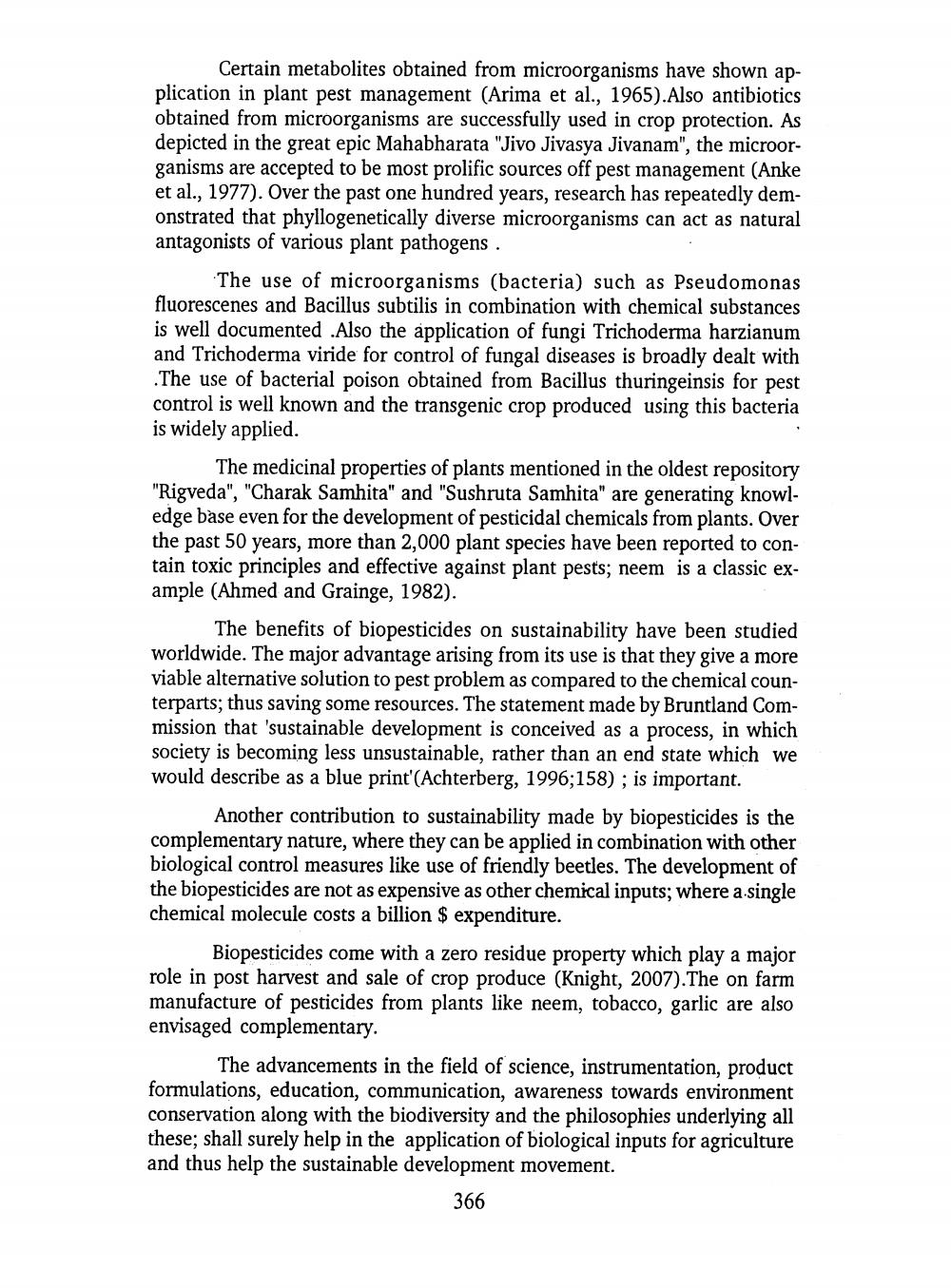________________
Certain metabolites obtained from microorganisms have shown application in plant pest management (Arima et al., 1965). Also antibiotics obtained from microorganisms are successfully used in crop protection. As depicted in the great epic Mahabharata "Jivo Jivasya Jivanam", the microorganisms are accepted to be most prolific sources off pest management (Anke et al., 1977). Over the past one hundred years, research has repeatedly demonstrated that phyllogenetically diverse microorganisms can act as natural antagonists of various plant pathogens.
The use of microorganisms (bacteria) such as Pseudomonas fluorescenes and Bacillus subtilis in combination with chemical substances is well documented .Also the application of fungi Trichoderma harzianum and Trichoderma viride for control of fungal diseases is broadly dealt with .The use of bacterial poison obtained from Bacillus thuringeinsis for pest control is well known and the transgenic crop produced using this bacteria is widely applied.
The medicinal properties of plants mentioned in the oldest repository "Rigveda", "Charak Samhita" and "Sushruta Samhita" are generating knowledge base even for the development of pesticidal chemicals from plants. Over the past 50 years, more than 2,000 plant species have been reported to contain toxic principles and effective against plant pests; neem is a classic example (Ahmed and Grainge, 1982).
The benefits of biopesticides on sustainability have been studied worldwide. The major advantage arising from its use is that they give a more viable alternative solution to pest problem as compared to the chemical counterparts; thus saving some resources. The statement made by Bruntland Commission that 'sustainable development is conceived as a process, in which society is becoming less unsustainable, rather than an end state which we would describe as a blue print'(Achterberg, 1996;158); is important.
Another contribution to sustainability made by biopesticides is the complementary nature, where they can be applied in combination with other biological control measures like use of friendly beetles. The development of the biopesticides are not as expensive as other chemical inputs; where a single chemical molecule costs a billion $ expenditure.
Biopesticides come with a zero residue property which play a major role in post harvest and sale of crop produce (Knight, 2007).The on farm manufacture of pesticides from plants like neem, tobacco, garlic are also envisaged complementary.
The advancements in the field of science, instrumentation, product formulations, education, communication, awareness towards environment conservation along with the biodiversity and the philosophies underlying all these; shall surely help in the application of biological inputs for agriculture and thus help the sustainable development movement.
366




